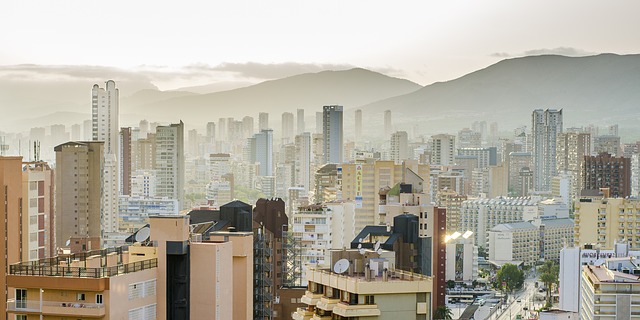Urban Heats
On a hot, bright day, there’s a reason you can fry an egg on the street.
During the day, pavement, concrete, bricks, blacktop, parking lots, and buildings absorb and store heat before radiating it back out. With plenty of pavement and a big number of buildings, it’s no surprise that city dwellers experience higher temperatures than their rural counterparts.
However, Urban Heats in many circumstances, the difference isn’t just a few degrees. According to the National Integrated Heat Health Information System, neighborhoods in highly developed cities can have temperatures 15 to 20 degrees higher in the mid-afternoon than outlying locations with more vegetation and less urbanization (NIHHIS).
On Wednesday, July 14, Climate Central released a study explaining how they developed an index to assess the intensity of urban heat islands and then applied it to 159 cities across the country. New Orleans, Newark, New York City, Houston, and San Francisco ranked first through fifth in terms of the most intense urban heat islands, with typical temperatures ranging from 7 to 9 degrees Fahrenheit higher.
Urban Heats, Large cities such as Chicago, Illinois; Charlotte, North Carolina (7 degrees); Portland, Oregon (6 degrees); and Richmond, Virginia were also included in the study (6 degrees).According to the study, cities in the Midwest and Northeast had more compact, historically built-out surroundings with higher structures, which intensified their urban heat island imprint.
Cities with a significant percentage of impermeable surfaces in their geography, such as Houston and Fresno, California, scored better.

“Perhaps surprisingly,” the research stated, “several cities in the severely hot Southwest scored lower on the index.” “Their low ratings are mostly due to the fact that the temperatures in their immediate surroundings are similar to those in cities.”
It went on to say that just because the cities have lower scores doesn’t mean they aren’t experiencing heat waves.
Rather, it stresses how the city’s surrounding environment, which is made up of desert or rock, is naturally hotter due to a lower albedo.
“You can think of an urban heat island as anything that humans do to make the environment around us hotter, and many of those things get amplified the more people you have living together, the more densely populated you are, which obviously happens a lot in an urban environment told metrologist. One of the top six parameters evaluated by researchers while generating the index for the study was population density.
Albedo, percentage of greenery, building height, average street width, and city irregularity were among the others. Albedo is the reason why wearing dark clothing in the summer is warmer than wearing lighter clothing. It determines whether a surface reflects or absorbs the sun’s heat, such as a white shirt or a black shirt.
“Think of blacktop or… black roofing materials; they’re going to collect a lot of the sun’s energy, keep onto it, and radiate it back to you all day and into the night,” Pershing explained. “And so that’ll play a huge role in raising the temperature in the atmosphere around you.”Human-caused heat emissions, in addition to the previously mentioned causes, played an influence in the heat intensity index.
Pershing discovered that, ironically, air conditioners played a part in leading to heat islands. According to the study, air conditioning units from urban buildings might add 20% more heat to the outdoor air than normal summer weather.
“Things like air conditioners are literally dumping heat out into the alleyways and onto the streets,” Pershing said, adding to the urban heat island effect. “And so you’re going to turn on your air conditioner on a really hot, muggy night.”
Urban Heats and Risk
is it impact our health?
Extreme urban heat is a public health concern because it exacerbates air pollution and creates hazardous conditions for those who work outside or dwell in buildings without air conditioning. With over 85 percent of the population of the United States living in cities, it’s safe to conclude that this will not only affect the vast majority of Americans, but has already done so.
According to studies, past discriminatory housing practices such as redlining — a now-illegal practice in which mortgage lenders denied loans or insurance providers restricted services to certain areas of a community — combined with other socio-economic factors have resulted in communities of color being disproportionately concentrated in areas with fewer trees and parks.
As a result, entire areas have experienced higher levels of urban heat than other neighborhoods within the same city, exposing the latter groups disproportionately to urban heat.

The urban heat island effect has been blamed in the past for contributing to the severity of heat waves by preventing cities from cooling down at night. While the actual death counts in black and white areas in Chicago during the 1995 heat wave were nearly comparable, the mortality rate for black communities in the city was around 1.5 times greater than their white counterparts.
Urban Heats,Chicago was ranked among the top ten cities with high intensity scores in the survey.According to the National Institute of Health, places with rising temperatures are at an increased risk of respiratory infections, heat exhaustion, heat stroke, and heat-related death, even when there are no heat waves.
reference – accuweather ,Urban Heats
recentclimate – Urban Heats
